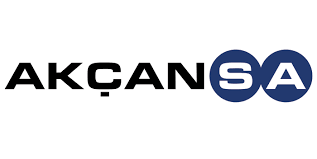09 Mayıs 2013 12225 0 PROJECT MANAGEMENT Fonksiyon360
Project selection techniques are divided into two;
A- Benefit Measurement Method
- Present Value
- Net Present Value
- Internal Rate of Return
- Payback Time
- Opportunity Cost
- Financial Cost
B- Constrain Optimization Tools
- Linear and Non-Linear Programming
- Integer Programming,
- Dynamic Programming,
- Multi-purpose Problem Optimization,
- Decision Tree Analysis,
- Logical and Analytic Diagram Methods
These techniques are purely based on mathematical ad financial analyses. These techniques are not enough when a business is selecting a project. Competition environment, strategical objectives of the company, political environment can critically effect the project selection. But our aims is to give some information to the project managers about the subjects described below.
A- Benefit Measurement Methods
1- Present Value: The value of future cash flows projected to the present.
BD= M(t) / (1+r)^t : It calculates the present financial value of the money t years in the future.
M(t): expense in t years
r: interest rate (discount rate)
t: period
2- Net Present Value: This means taking the sum of all the values found in present value method. Positive value indicates investment will be profitable and negative value means investment costs will be higher than gains. If it is zero, the project is neither profiting nor losing.
3- Benefit Cost Ratio - BCR: This found by dividing profits of the project to investment costs. This is an important indicator selecting the project that will end in similar times.
If B/C Ratio is higher than 1, profit of the project will be higher than investment. "B/C is found 2.5" means when you invest 1$ to you project you will earn 2.5$. If B/C Ratio is lower than 1 your investment is higher than your profit. B/C Ratio: If it is 1 it is nether profit nor lost.
4- Internal Rate of Return - IRR: IRR is an important numerical indicator when selecting a project. Expenses to the project and profits are mathematically calculated (little more complex than previous ones) a percentage is obtained and profit of the project is analyzed. If IRR is found 0.22, it means the project will gain 22% value in time. Selecting the project with higher IRR will be beneficial.
5- Payback Period: Payback Period is the name given when total profit exceeds investment costs. This means profit. When comparing more than one projects, it is better to select the project with fastest payback. Small Payback Time indicates a better projects.
6- Opportunity Cost: Opportunity cost is the cost that occurs when you select a project and give up the benefits of the other project. When you don't have enough resources the projects that you have said "No" are in this classification.
7- Financial Cost: The cost that occurs when the money is wasted when you don't invest the current money.
B- Constrain Optimization Tools
- Linear and Non-Linear Programming
- Integer Programming,
- Dynamic Programming,
- Multi-purpose Problem Optimization,
- Decision Tree Analysis,
- Logical and Analytic Diagram Methods










